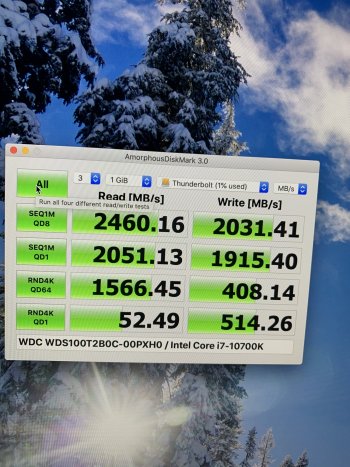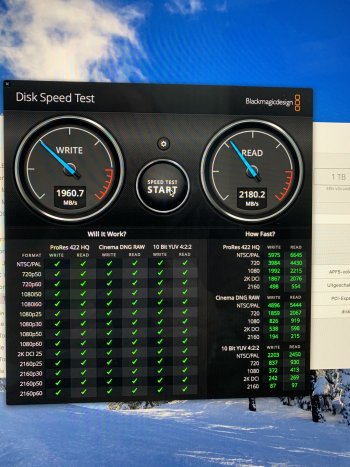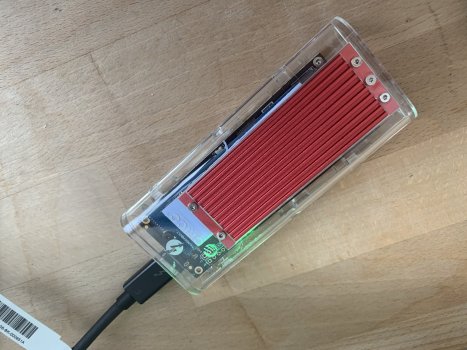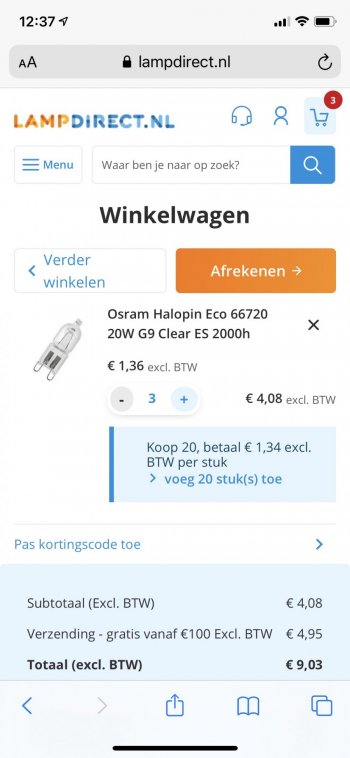I have bought the transparent Orico NVME/Thunderbolt 3 enclosure. I planned to buy an SX6200 SSD because they are affordable and fast. Various messages in this post learned me that this is not a good marriage.
Now my question is: What would be a good choice?
Requirements:
- connect to iMac 2020 for additional storage (don’t want disconnects)
- reasonable price (Below Samsung price level)
- 1 or 2 TB
- speed 2000/2000 or better
- low power usage (low heat)
- presumably single sided.
I’m considering the Intel 665p.
I found a lot of information about Thunderbolt devices on:

thunderbolttechnology.net
I would really appreciate to hear about your succes stories👍🏼
Ok, no replies. I bought a WD Blue SN550 1TB. Found a positive review (combined with a Thunderbolt enclosure). Reason: Modest price, reasonable performance and, most important, modest power usage.
My Test results (on iMac 2020):
Refer to the photos (1960/2180 MBs with Blackmagic)
Idle temperature 48 degrees Celcius.







